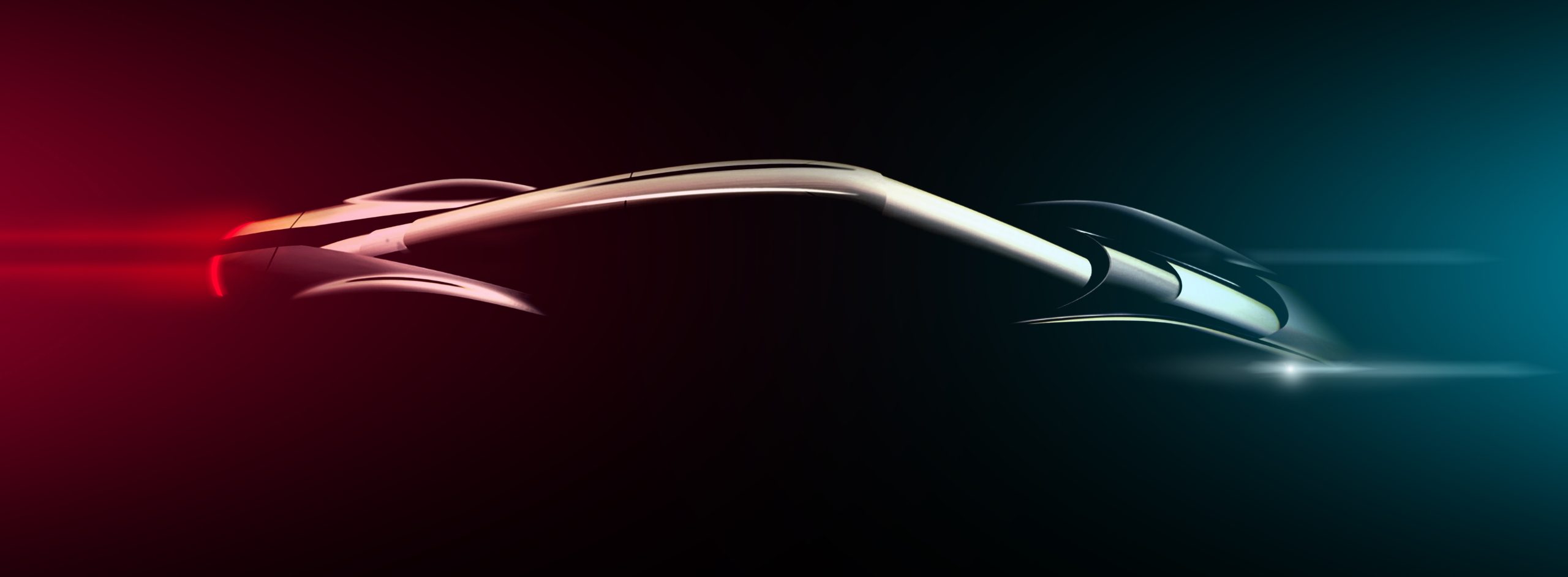

News
Automobili Pininfarina teases electric hypercar, credits Tesla’s Elon Musk for “electric vehicle movement”
Automobili Pininfarina, the Munich-based carmaker with deep roots in both the luxury market and Formula E recently teased its upcoming electric hypercar, code-named PF0 (Pininfarina Zero), set to debut in August at the exclusive Pebble Beach Concours in Monterey, California.
Its sister company Pininfarina is the legendary design house responsible for revered supercars like the Ferrari Testarossa, GT 250, and Enzo. In fact, the only street legal Ferrari’s not designed by them are the 1973 Dino 308 GT4 and 2013’s LaFerrari. They’ve also designed cars for Fiat, Alfa Romeo, BMW, Maserati, among others, and manufactured cars for GM, Mitsubishi, and Volvo. Another fun fact -Pininfarina had their own full-sized wind tunnel in 1972, eight years before GM had one.
Automobili Pininfarina has also assembled some impressive talent from across the automotive world. Their executive group includes former Jaguar / Land Rover, Bugatti, Volvo, and Audi employees, to name a few. Their lead designer, Luca Borgogno, previously led Lamborghini’s Turin design studio for Pininfarina, while Formula E driver Nick Heildfeld will be joining the team next year to help deliver a ‘race-bred’ hypercar.
The venture into manufacturing their own car is a sort of rebirth for Pininfarina. The company had fallen on hard times with debt restructuring in the late 2000’s and reductions in their workforce. Then in 2015 Mahindra & Mahindra stepped in to purchase a majority holding. If you aren’t familiar with M&M, they are manufacturer based out of India and one of the founding ten members of Formula E. They are India’s leading electric vehicle manufacturer.
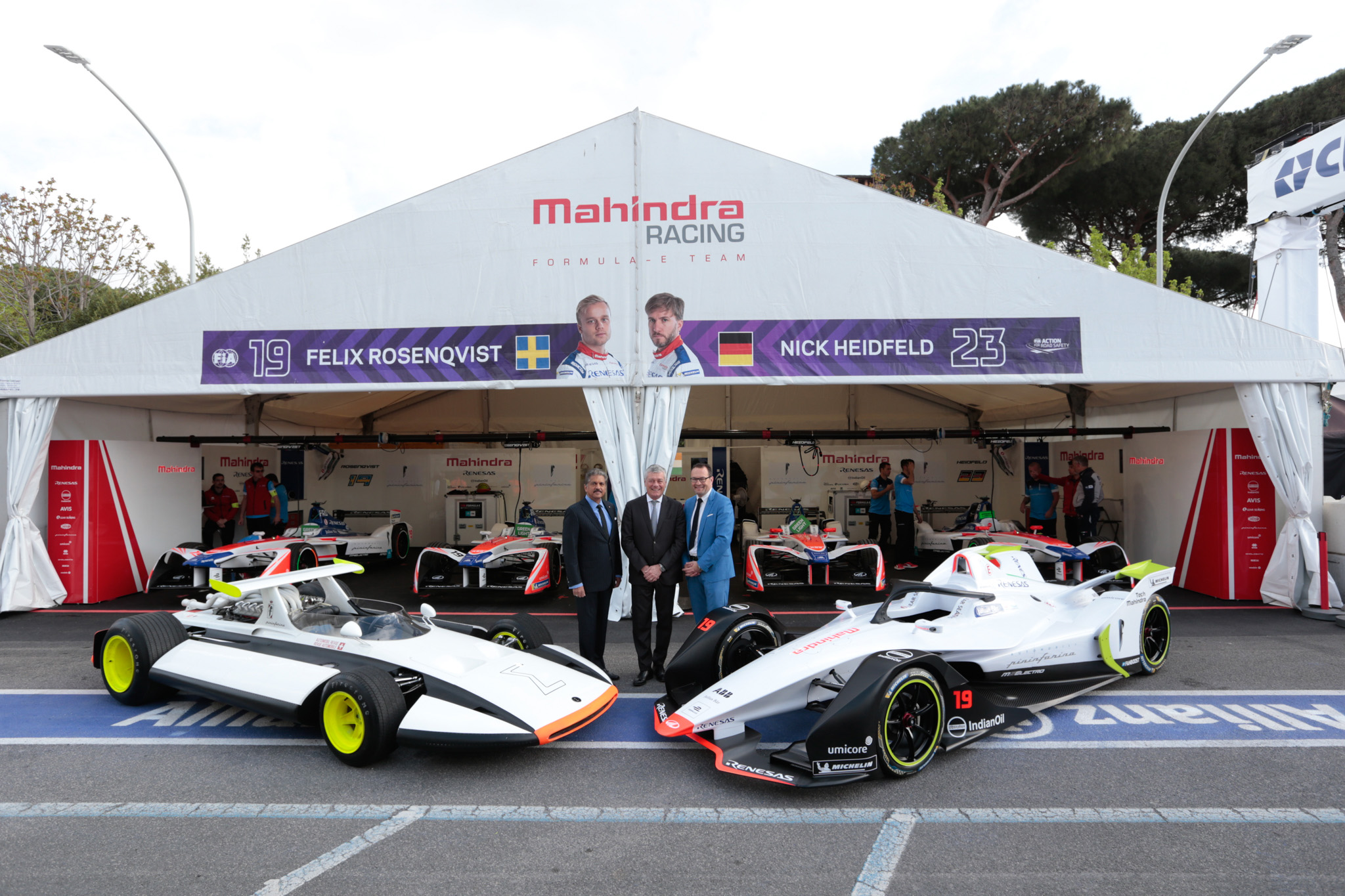
Mahindra Racing
I spoke with Automobili Pininfarina’s CEO Michael Perschke, Chief Brand Officer Dan Connell, and Design Director Luca Borgogno from their July 12th North American brand launch event in New York. My first question was why they chose to go fully electric, with so many established luxury automakers tepidly looking to hybrids for their first venture into electrification.
Michael was quick to give credit to Tesla and Elon Musk. “We wouldn’t be sitting here today if Elon hadn’t started the electric vehicle movement”. He said that to put both technologies on board means you are not committed to either and you don’t start designing a brand new high tech hypercar based on technology that’s over 100 years old. “You don’t want to get stuck with combustion engines,” he said. “The point of no return has been crossed, combustion engines are aging. They can be further improved but they are not a leapfrog technology”. These comments are important to take note of, as someone who has spent his career with companies like Audi and Mercedes, Mr. Perschke’s views on where the industry needs to go are telling.
Manufacturers and the oil industry often claim higher efficiencies are possible with combustion, but to achieve that requires greater complexity and expense, with depreciating returns – all while electric vehicles are making a big gain in performance and cost.
“If you want a brand that’s relevant in 2050, you don’t start with a drivetrain that’s been used since 1890” – Michael Perschke, Automobili Pininfarina.
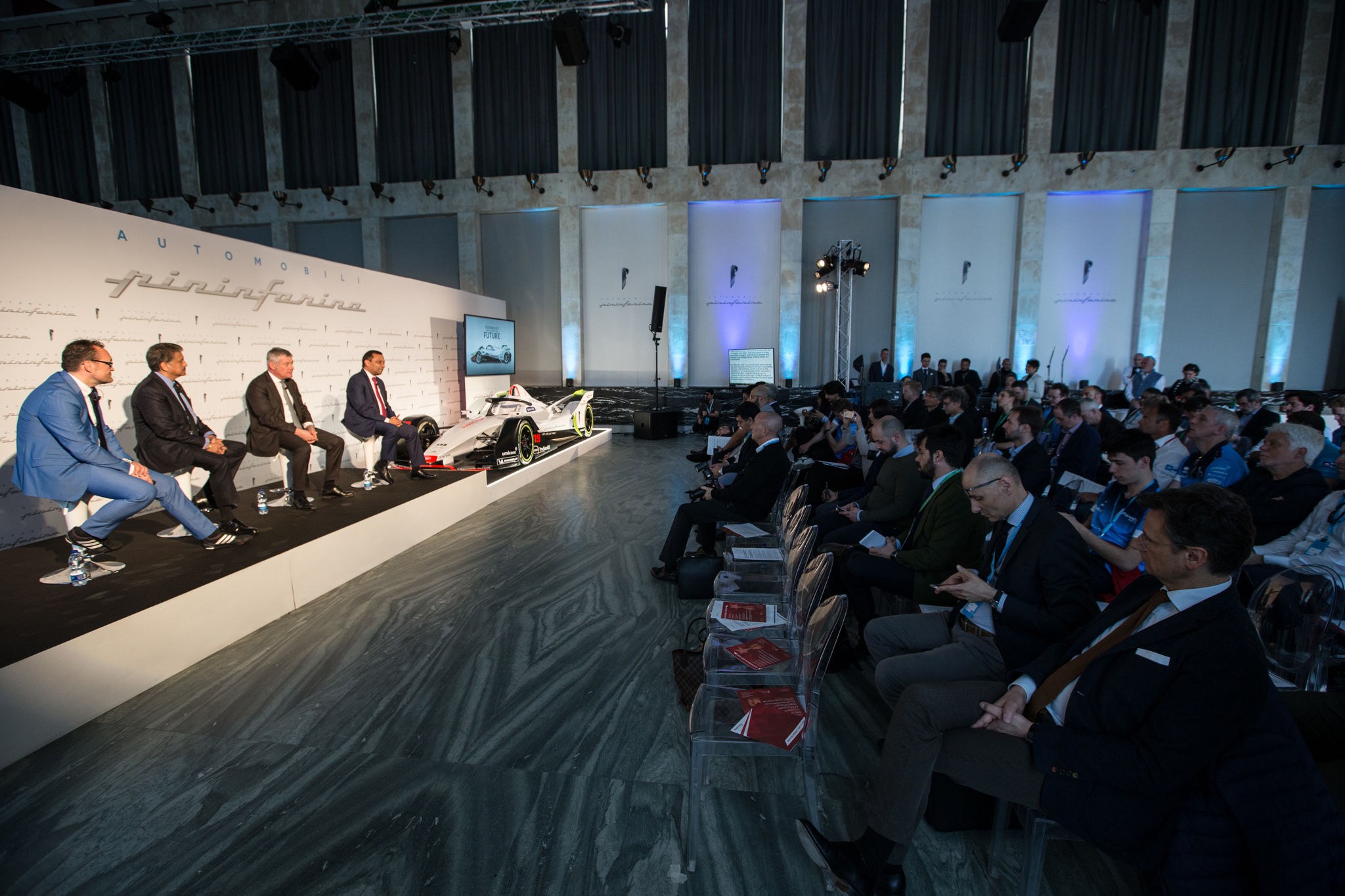
Automobili Pininfarina North American Brand Launch – New York July 12th, 2018
The car industry has seen several EV startups, with bold claims, but I think this one is legit. They have the right mix of experience, innovation, talent, and financial support. They are certainly targeting some impressive performance figures:
Release Date: 2020
0 – 100 km/h (62 mph): < 2 seconds
0 – 300 km/h (186 mph): < 12 seconds
Top speed: > 400 km/h (250 mph)
Range: > 500 km (310 miles)
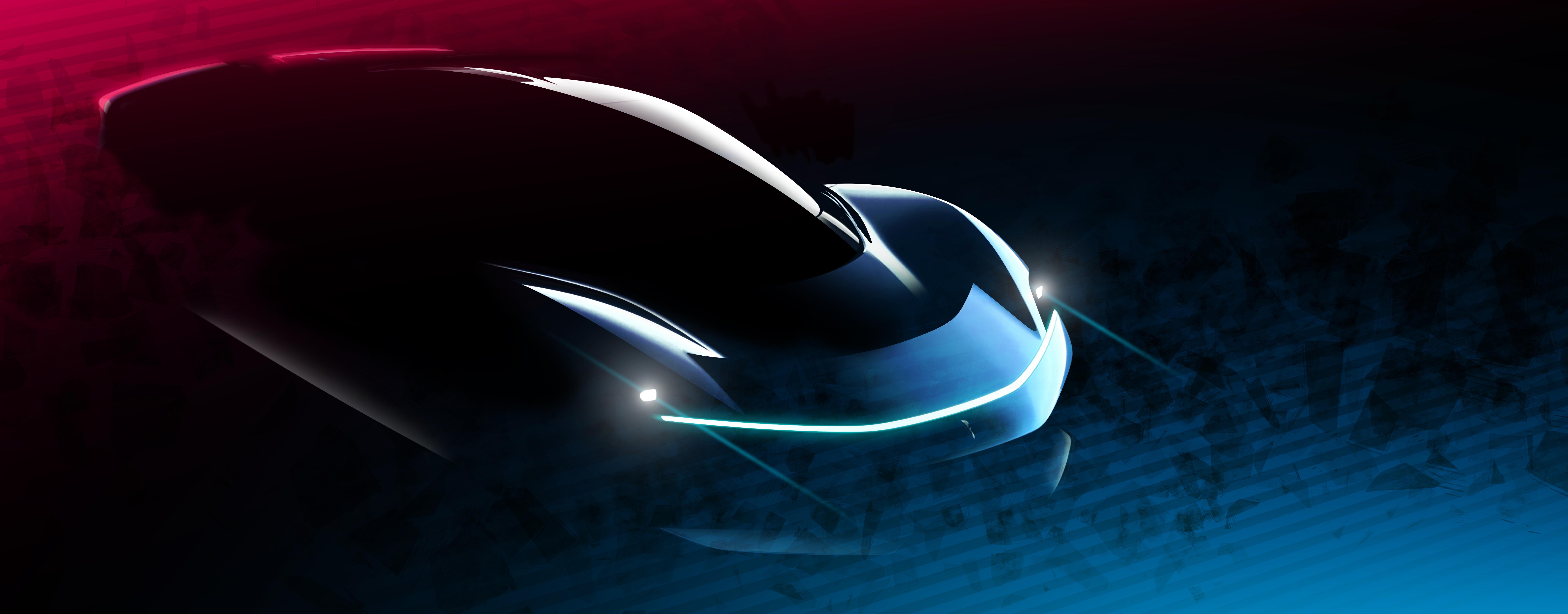
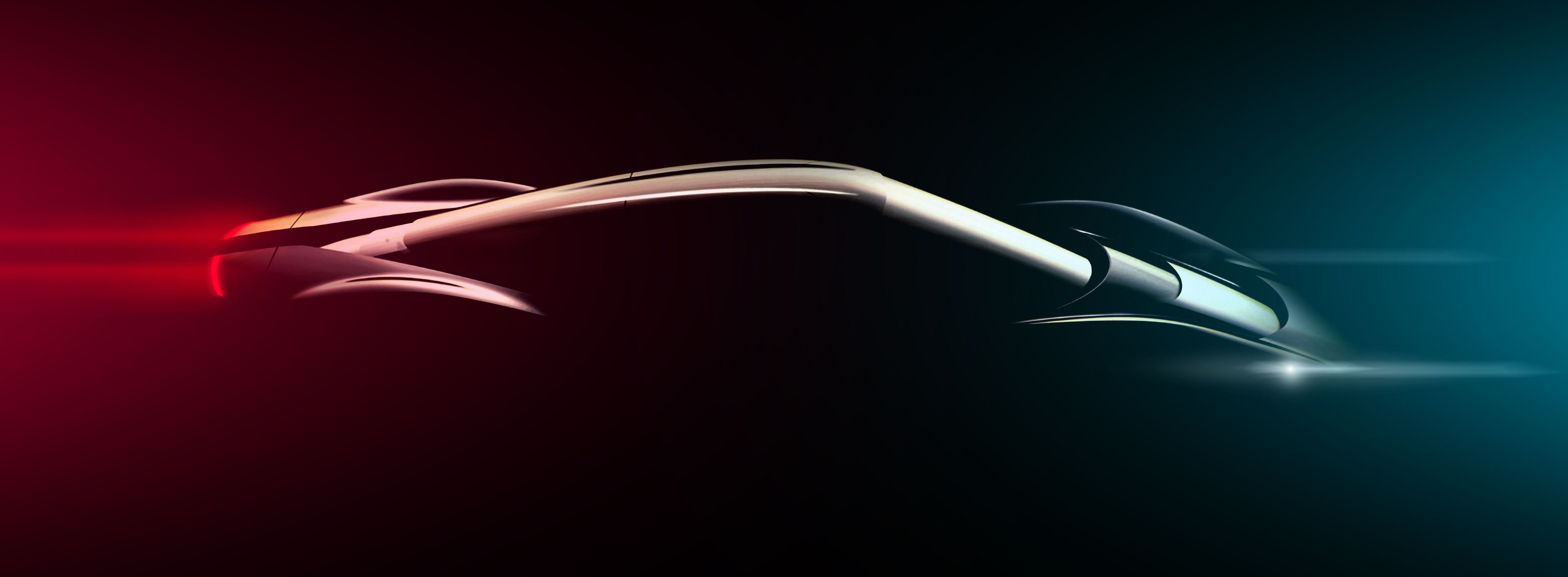
You’ll notice that both the timing and the performance figures are conspicuously similar to Tesla’s coming Roadster, but any speculation of competition with Tesla was quickly shot down. “We are complimenting the offering that Elon has launched…. with a focus more on the European supercar design styling heritage”. On the raw specifications, this vehicle seems an obviously competitor but that’s oversimplifying the market. With a reported price tag exceeding $2 million dollars, they are obviously targeting a different segment of the market – it’s a European hypercar after all. And while that may seem to limit its direct impact, I’m excited to see what it can do and how it will influence the performance luxury vehicle segment. As Elon has noted, we still need to fully remove the “performance halo” surrounding high-end combustion cars. That’s Tesla’s goal with the new Roadster and I hope Automobili Pininfarina can help do that for Italian supercars as well. How many posters and computer desktop backgrounds still depict gas burning supercars? It’s time they were replaced.
Luca Borgogno, their design director, shared some of his insights into the design with me.
“We have two key words,” he said “purity and beauty”. He said it was important that all design elements serve a purpose, that form and function must be joined together for a purity of design. Their intent is for the PFO to convey both the legacy of European sports cars and link it to the modern technology that’s behind it.
For the exterior, he said, low drag was obviously important for a vehicle capable of going over 250mph. Keeping the middle of the car as a clean, unobstructed line improves the aerodynamics he said. To do this the rear of the vehicle will have a split rear wing, with each side capable of individually articulating for improved downforce and even provide for air braking. It certainly has a sleek looking profile.
They aren’t releasing any images of the interior yet but he says it again follows the same purity ethos, with clean simplicity and a high degree of seamless digitization. It seems this is a new approach Tesla has pioneered. To add beauty to the interior through simplification. I’m certainly supportive, the interior of my Model 3 is beautiful and immediately relaxing. Automobili Pininfarina seems to be embracing the idea as well.
Luca also noted that purity wasn’t just about interior design but also in the materials they use. That means using as much sustainable and natural materials as possible.
It became apparent that they were designing this car, not just because they loved cars, but because they see where society is going and that we need a more sustainable approach. “Sustainability should not be a buzzword,” Michael said. “For us, it will be the full 360 degree approach. It starts at the tailpipe… but we must also look at the manufacturing, the battery second life, and using renewable energy”. They are currently working on their roadmap to full sustainability and will have explicit targets for it, with more information coming this fall. They complimented Tesla as leaders in this area as well, including their solar installation at the Gigafactory.
The technology to make this car possible seems to be right around the corner. Tesla already has their prototype driving around and reportedly “breaking the laws of physics”. If Automobili Pininfarina can integrate some of their parent companies Formula E tech, then there’s no reason to think this car won’t meet their goals. They are producing the car in small volumes, so mass production “hell” isn’t a concern, but they did note more vehicle models will come, specifically that SUVs are in their future. Is this the start of a new all-electric luxury brand in Europe? One can hope.
It seems they have the right mix to be successful and I hope we see them soon.
Afterword:
At the end of the interview, I asked them if they drive electric cars or which ones they particularly enjoy. Michael quickly noted test driving the Tesla P100D with ludicrous mode was his favorite so far and that’s probably the one he’s going to buy. He also said he’d look at the Volvo XC90 plug-in hybrid as a family car. A Ferrari, he said, would also likely be needed – although I assume that’s at least until their PF0 is available.

Elon Musk
Elon Musk and Tesla AI Director share insights after empty driver seat Robotaxi rides
The executives’ unoccupied tests hint at the rapid progress of Tesla’s unsupervised Robotaxi efforts.

Tesla CEO Elon Musk and AI Director Ashok Elluswamy celebrated Christmas Eve by sharing personal experiences with Robotaxi vehicles that had no safety monitor or occupant in the driver’s seat. Musk described the system’s “perfect driving” around Austin, while Elluswamy posted video from the back seat, calling it “an amazing experience.”
The executives’ unoccupied tests hint at the rapid progress of Tesla’s unsupervised Robotaxi efforts.
Elon and Ashok’s firsthand Robotaxi insights
Prior to Musk and the Tesla AI Director’s posts, sightings of unmanned Teslas navigating public roads were widely shared on social media. One such vehicle was spotted in Austin, Texas, which Elon Musk acknowleged by stating that “Testing is underway with no occupants in the car.”
Based on his Christmas Eve post, Musk seemed to have tested an unmanned Tesla himself. “A Tesla with no safety monitor in the car and me sitting in the passenger seat took me all around Austin on Sunday with perfect driving,” Musk wrote in his post.
Elluswamy responded with a 2-minute video showing himself in the rear of an unmanned Tesla. The video featured the vehicle’s empty front seats, as well as its smooth handling through real-world traffic. He captioned his video with the words, “It’s an amazing experience!”
Towards Unsupervised operations
During an xAI Hackathon earlier this month, Elon Musk mentioned that Tesla owed be removing Safety Monitors from its Robotaxis in Austin in just three weeks. “Unsupervised is pretty much solved at this point. So there will be Tesla Robotaxis operating in Austin with no one in them. Not even anyone in the passenger seat in about three weeks,” he said. Musk echoed similar estimates at the 2025 Annual Shareholder Meeting and the Q3 2025 earnings call.
Considering the insights that were posted Musk and Elluswamy, it does appear that Tesla is working hard towards operating its Robotaxis with no safety monitors. This is quite impressive considering that the service was launched just earlier this year.
Elon Musk
Starlink passes 9 million active customers just weeks after hitting 8 million
The milestone highlights the accelerating growth of Starlink, which has now been adding over 20,000 new users per day.

SpaceX’s Starlink satellite internet service has continued its rapid global expansion, surpassing 9 million active customers just weeks after crossing the 8 million mark.
The milestone highlights the accelerating growth of Starlink, which has now been adding over 20,000 new users per day.
9 million customers
In a post on X, SpaceX stated that Starlink now serves over 9 million active users across 155 countries, territories, and markets. The company reached 8 million customers in early November, meaning it added roughly 1 million subscribers in under seven weeks, or about 21,275 new users on average per day.
“Starlink is connecting more than 9M active customers with high-speed internet across 155 countries, territories, and many other markets,” Starlink wrote in a post on its official X account. SpaceX President Gwynne Shotwell also celebrated the milestone on X. “A huge thank you to all of our customers and congrats to the Starlink team for such an incredible product,” she wrote.
That growth rate reflects both rising demand for broadband in underserved regions and Starlink’s expanding satellite constellation, which now includes more than 9,000 low-Earth-orbit satellites designed to deliver high-speed, low-latency internet worldwide.
Starlink’s momentum
Starlink’s momentum has been building up. SpaceX reported 4.6 million Starlink customers in December 2024, followed by 7 million by August 2025, and 8 million customers in November. Independent data also suggests Starlink usage is rising sharply, with Cloudflare reporting that global web traffic from Starlink users more than doubled in 2025, as noted in an Insider report.
Starlink’s momentum is increasingly tied to SpaceX’s broader financial outlook. Elon Musk has said the satellite network is “by far” the company’s largest revenue driver, and reports suggest SpaceX may be positioning itself for an initial public offering as soon as next year, with valuations estimated as high as $1.5 trillion. Musk has also suggested in the past that Starlink could have its own IPO in the future.
News
NVIDIA Director of Robotics: Tesla FSD v14 is the first AI to pass the “Physical Turing Test”
After testing FSD v14, Fan stated that his experience with FSD felt magical at first, but it soon started to feel like a routine.

NVIDIA Director of Robotics Jim Fan has praised Tesla’s Full Self-Driving (Supervised) v14 as the first AI to pass what he described as a “Physical Turing Test.”
After testing FSD v14, Fan stated that his experience with FSD felt magical at first, but it soon started to feel like a routine. And just like smartphones today, removing it now would “actively hurt.”
Jim Fan’s hands-on FSD v14 impressions
Fan, a leading researcher in embodied AI who is currently solving Physical AI at NVIDIA and spearheading the company’s Project GR00T initiative, noted that he actually was late to the Tesla game. He was, however, one of the first to try out FSD v14.
“I was very late to own a Tesla but among the earliest to try out FSD v14. It’s perhaps the first time I experience an AI that passes the Physical Turing Test: after a long day at work, you press a button, lay back, and couldn’t tell if a neural net or a human drove you home,” Fan wrote in a post on X.
Fan added: “Despite knowing exactly how robot learning works, I still find it magical watching the steering wheel turn by itself. First it feels surreal, next it becomes routine. Then, like the smartphone, taking it away actively hurts. This is how humanity gets rewired and glued to god-like technologies.”
The Physical Turing Test
The original Turing Test was conceived by Alan Turing in 1950, and it was aimed at determining if a machine could exhibit behavior that is equivalent to or indistinguishable from a human. By focusing on text-based conversations, the original Turing Test set a high bar for natural language processing and machine learning.
This test has been passed by today’s large language models. However, the capability to converse in a humanlike manner is a completely different challenge from performing real-world problem-solving or physical interactions. Thus, Fan introduced the Physical Turing Test, which challenges AI systems to demonstrate intelligence through physical actions.
Based on Fan’s comments, Tesla has demonstrated these intelligent physical actions with FSD v14. Elon Musk agreed with the NVIDIA executive, stating in a post on X that with FSD v14, “you can sense the sentience maturing.” Musk also praised Tesla AI, calling it the best “real-world AI” today.








